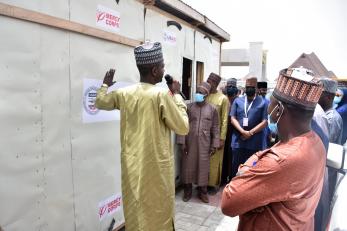Innovative Shelter Solutions for People on the Move

Implementing shelter programming in a volatile security and humanitarian context requires careful consideration to ensure the sustainability of the proposed intervention linking humanitarian assistance to the development and resilience of the affected communities.
Currently, most shelter interventions fall under emergency, transitional and permanent shelters responding to the different stages of humanitarian crisis. Hence, Mercy Corps felt the need to find an alternative and innovative shelter solution that addresses both the most immediate and long-term needs of affected populations with easily assembled, collapsible, transportable and upgradable shelters.
This will help avoid issues surrounding land availability as people can carry the shelter with them as they move or in ensuring proximity to livelihood opportunities. In addition to this, the proposed model will also help humanitarian agencies to pre-position an easy to assemble, mobile shelter kit made from locally sourced materials and built in a controlled environment.
With this, Mercy Corps worked in developing two collapsible and transportable shelter prototypes: the first one is for waterlogging context and the second for land with no flooding or water logging challenges.
Extremely positive feedback was received from stakeholders on the innovative shelter models across all the locations. They recommended the scale-up of the shelter models and adoption by shelter partners.